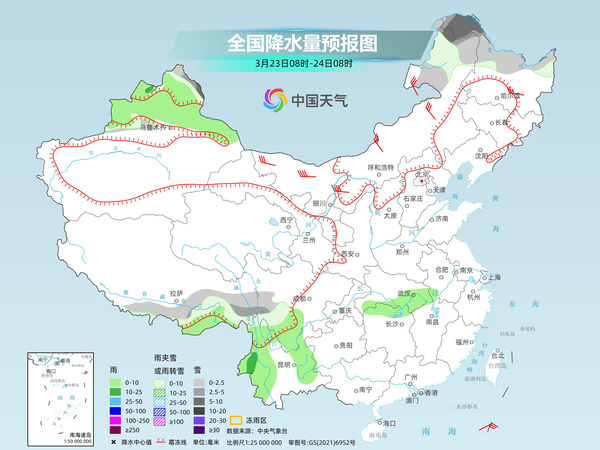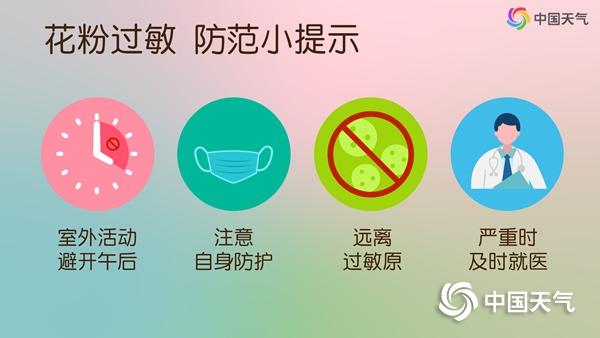CCTV News: According to China Weather Network, with the continuous heating in recent days, the temperature in most parts of the country has risen to a significantly higher level than the same period last year. In the next four days (March 23 to 26), most of the country will still have less rain and snow, mainly sunny or cloudy weather, and the temperature in various places will continue to rise, and the range of the highest temperature exceeding 30℃ will continue to expand. Record-breaking warm heat may occur in the Huanghuai, Jianghuai and northern Jiangnan areas.
The great recovery continues until the 26th. The Huanghuai River, Huai River, Huai River, and Jiangnan may break the record and warmth. Since this week, most of the country has been controlled by high-pressure ridges, and with the support of sunshine, rising sun and warmth have become the main theme. The temperature is currently in a state that is significantly higher than the same period in the previous year.
This wave of big recovery will continue in the next four days. It is expected that the temperature in North China and its south will exceed 25℃ in a large area before the 26th. From the 25th to the 26th, the warmth in the areas south of the Yellow River will reach its peak. Not only will the maximum temperature exceed 30℃ in a large area, but also 35℃ high temperature weather may occur in Jiangnan and South China.
This round of heating process lasts for a long time and has a large temperature increase. The Huanghuai, Jianghuai, and northern Jiangnan may experience rare or even record-breaking warmth during the same period. For example, Wuhan and Hefei may set the earliest record for local 30℃ on the 25th, and Hangzhou may break the earliest record for local high temperature on the 26th. In addition, 30℃ in Hefei on the 25th, 34℃ in Zhengzhou and 32℃ in Nanjing on the 26th may all set the local highest temperature record in March.
However, this heat up will not continue. The cold wave from the 25th to the 28th will gradually bring severe cooling to most of the country. The maximum local temperature drop can reach 20℃, and the contrast between cold and warm is obvious. It is recommended that the public pay attention to the approaching forecast and warning information and adjust their dress in time according to temperature changes.
Most of the country has less rain and snow, and strong winds and dryness will continue in many places in the north.
In the next four days, most of the country will continue to maintain a weather pattern of less precipitation. In the north, the minimum relative humidity in the afternoon is less than 30%, which is very dry. Among them, rain and snow will mainly occur in Xinjiang, Inner Mongolia and some southwest areas today and tomorrow, and the intensity will be small overall.
The Central Meteorological Observatory predicts that today, light snow or sleet will be found in some areas of northeastern Inner Mongolia, northern Heilongjiang, northern Xinjiang, eastern Tibet, and southern western Sichuan Plateau. Among them, moderate to heavy snow will be found in some areas of northeastern Inner Mongolia, northwestern Heilongjiang, eastern Xinjiang, and northeastern Tibet. There will be light rain in some areas in northern Xinjiang, southeastern Tibet, eastern Jianghan, northern Hunan, western Yunnan and eastern Yunnan, and local moderate rain.

Tomorrow, there will be light snow or sleet in some areas of central and eastern Inner Mongolia, northern Xinjiang, northern Xinjiang, and the Tianshan area, northern Hebei, among which moderate to heavy snow will be included in some areas of southeastern Inner Mongolia.

In sunny and dry weather, many places across the country are in a period of high incidence of pollen allergies. It is recommended that sensitive people avoid outdoor activities during the period of high pollen concentration of 10:00 to 17:00, wear a mask when going out, use lenses instead of contact lenses, and wash their mouths and noses and change their clothes in time after returning home. If indoors, you can close the doors and windows to reduce air flow, or use an air purifier to reduce indoor pollen concentration. (Photographed by Huo Yunyi)




